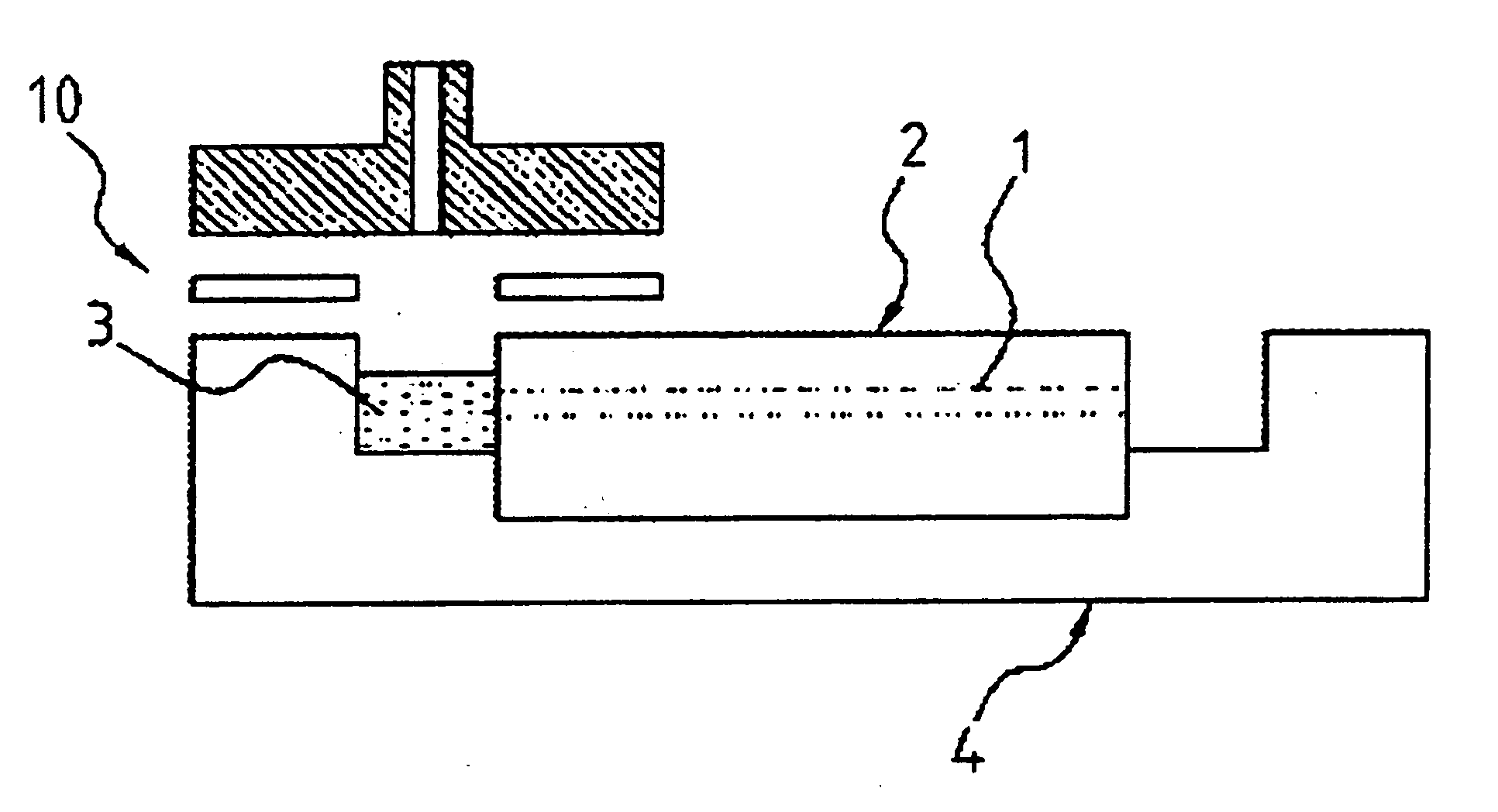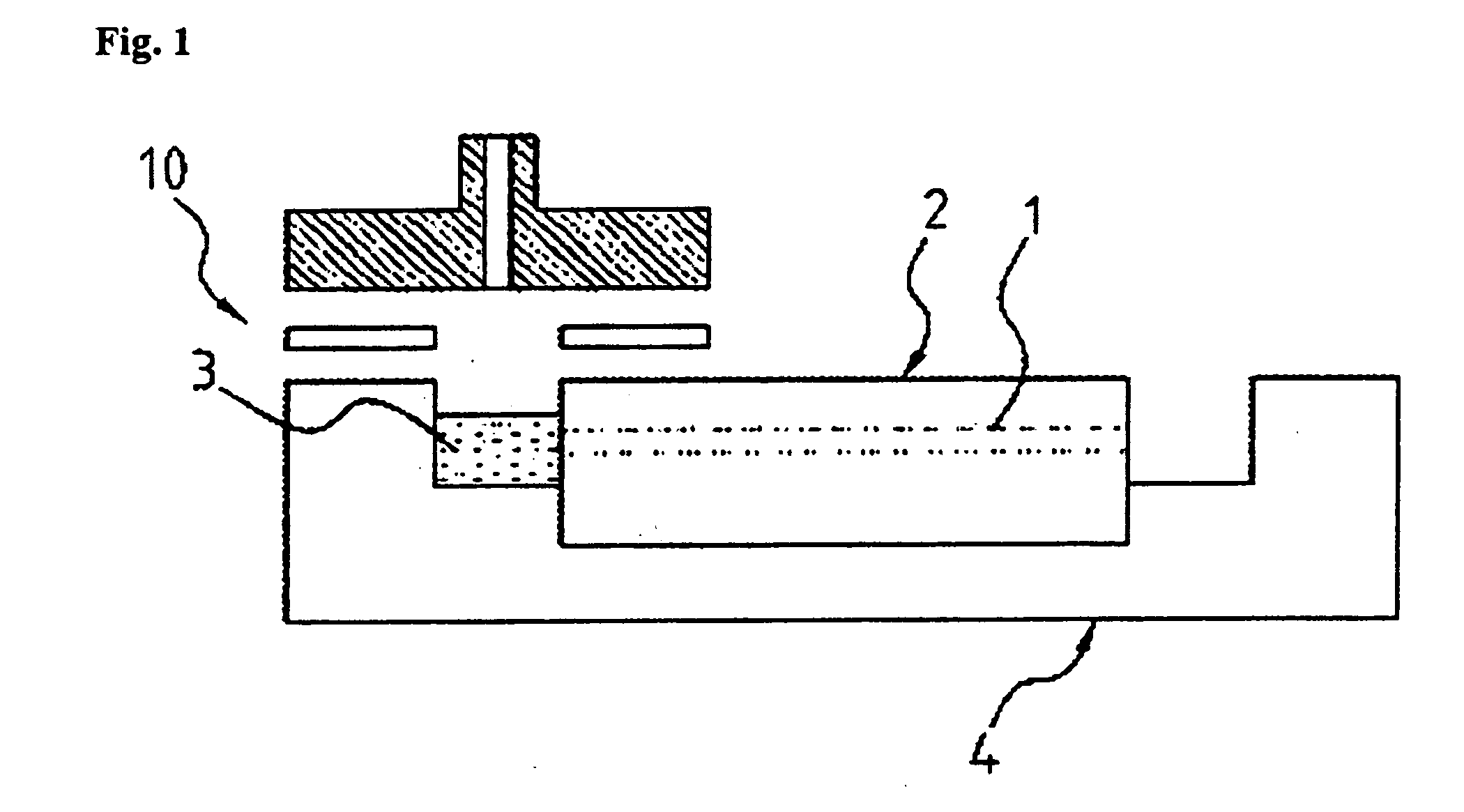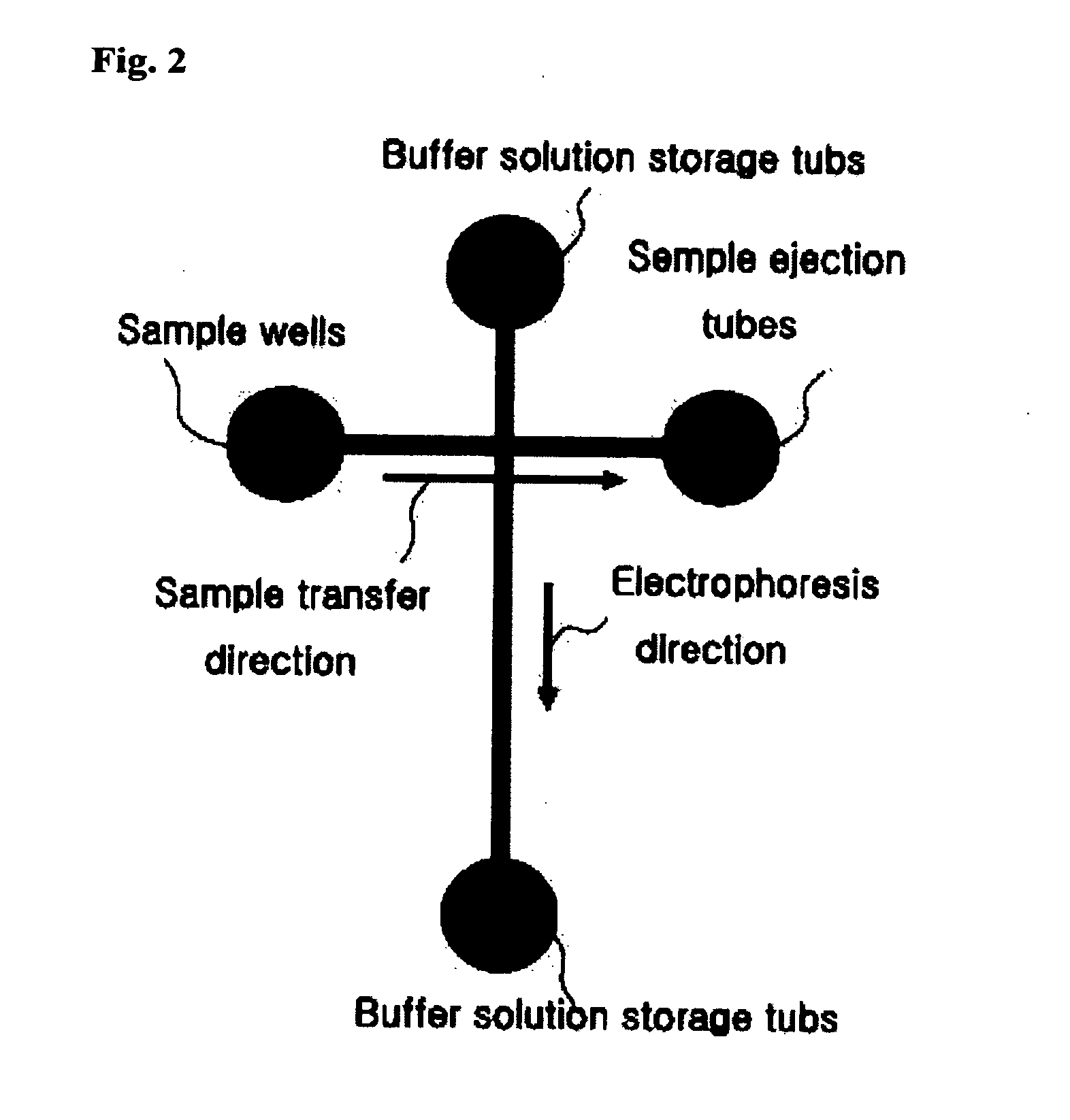Separation Method For Multi Channel Electrophoresis Device Having No Individual Sample Wells
a multi-channel electrophoresis and separation method technology, applied in the direction of isotope separation, electrolysis, diaphragm, etc., can solve the problems of increasing the arrangement density of separation tubes, increasing the cost of processing injection tubes, and increasing the difficulty of radial design
- Summary
- Abstract
- Description
- Claims
- Application Information
AI Technical Summary
Benefits of technology
Problems solved by technology
Method used
Image
Examples
Embodiment Construction
[0050] Injection and Separation of DNA Samples using Multi-Channel Electrophoresis
[0051] Feasibility of the above-described methods by applying the following conditions is experimented. An electrophoresis chip is a chip having 24 capillary channels. Capillary channels having an inner diameter of 100 μm and a length of 30 mm are used for the electrophoresis chip. And the channels are filled with 3% polyethylene oxide (PEO, Aldrich Company) in advance.
[0052] For the electrophoresis buffer solution, 0.5×TBE buffer (45 mM tris-borate, 1 mM EDTA, pH 8.0) corresponding to a usual buffer solution is used, and a mixed solution of 100, 200, 300, 400, 500, 600, 800, and 1,000 bp DNAs is used for the sample to be separated.
[0053] Silicon oil is injected into the storage tub of the electrophoresis device as a non-polar solvent, and the sample is injected into the capillary tubes which are analysis tubes by applying 200 V for 20 seconds to the ends of the ejection tubes of the sample. After t...
PUM
| Property | Measurement | Unit |
|---|---|---|
| Diameter | aaaaa | aaaaa |
| Diameter | aaaaa | aaaaa |
| Length | aaaaa | aaaaa |
Abstract
Description
Claims
Application Information
 Login to View More
Login to View More - R&D
- Intellectual Property
- Life Sciences
- Materials
- Tech Scout
- Unparalleled Data Quality
- Higher Quality Content
- 60% Fewer Hallucinations
Browse by: Latest US Patents, China's latest patents, Technical Efficacy Thesaurus, Application Domain, Technology Topic, Popular Technical Reports.
© 2025 PatSnap. All rights reserved.Legal|Privacy policy|Modern Slavery Act Transparency Statement|Sitemap|About US| Contact US: help@patsnap.com



